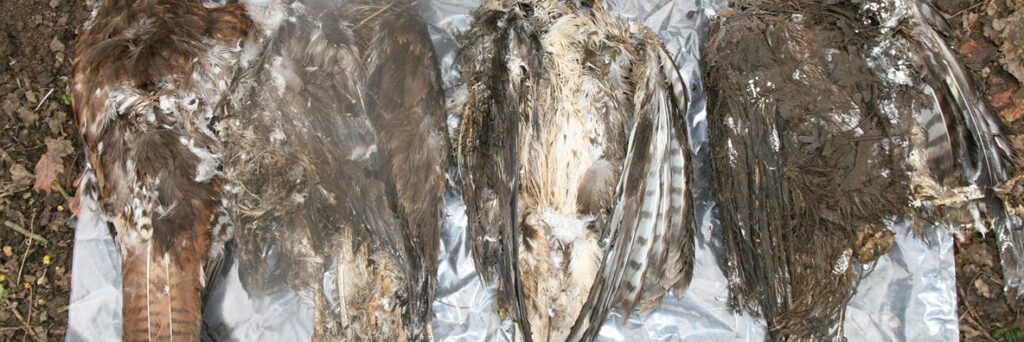Gamekeeper Paul Allen of Wimborne St Giles, appeared at Weymouth Magistrates’ Court on 16 February (2023) following a guilty plea last month relating to multiple raptor persecution offences.
As we reported on Protect the Wild in January (Yet more dead buzzards and yet another gamekeeper in court) the bodies of six shot Buzzards and the remains of three more were discovered in Allen’s yard on the estate in 2021, after a poisoned Red Kite was reported to Dorset Police by a member of the public. The kite contained high levels of brodifacoum, the deadliest rodenticide on the market, which was also used to kill a White-tailed Eagle from the Isle of Wight reintroduction scheme in the same area 10 months later (a second White-tailed Eagle was found poisoned with the pesticide Bendiocarb on a shooting estate in West Sussex around the same time (West Sussex eagle poisoned with bendiocarb). Bendiocarb has been used to kill birds of prey for decades and has been described by RSPB Investigators as ‘the poisoner’s weapon of choice’).
As was revealed at the time a search of Allen’s land also uncovered stashes of Bendiocarb, two bottles of the banned substance strychnine, two tins of the banned poison Cymag and the more brodifacoum. There was also a loaded gun left propped behind a door in Allen’s home.
For deliberately killing protected multiple birds of prey and leaving a loaded gun lying around, Allen was given a paltry 15 weeks in custody, suspended for 12 months and fined £2022.
It’s worth noting that just three months ago, a climate activist who disrupted traffic on the M25 was sentenced to six months in prison…
RSPB response
Mark Thomas, the Head of Investigations at the RSPB, and a man who has been tackling raptor persecution for many years said:
“It is clear that the use of the lethal rat poison brodifacoum needs much tighter regulation and controls over use, as it is clearly being both misused and abused to kill birds of prey. At the very least this product should be restricted to indoor use only, as it was before the Government relaxed its use in 2016. We also suggest that only accredited pest controllers should be able to use it in specific circumstances. If not, then the unnecessary increase in bird of prey deaths, including White-tailed Eagles and Red Kites, will continue.”
Tom Grose, another RSPB investigations officer, has posted an excellent blog on the RSPB Community site Lowland shoots and poison – a toxic situation about the investigation on Shaftesbury Estate into Allen’s wildlife crimes, and has also provided additional information about the poisoned White-tailed Eagle found there later in the year (an investigation suddenly shut down by Dorset Police after coming under pressure from local farmer and MP Chris ‘We don’t want eagles in Dorset’ Loder. The blog includes the staggering information that after x-rays were made of the six Buzzards, “forensic analysis showed [one] had survived two previous shootings before being killed by a shotgun blast at close range“).
Allen was employed by the estate to raise pheasants for the gun. He presumably understood part of his role as killing birds of prey. The shooting industry (as we have said many times on this site) has absolutely no right at all to determine how many birds of prey there are in the UK. Pathetic ‘sentences’ and fines equivalent to the cost of a day’s shooting for a small group of guns will not change anything.
Shooting must be stopped. We will do everything we can to ‘change the narrative’, help the public see the shooting industry for the scandal that it is, and get rid of it once and for all.
- Please note that poisons used to kill birds of prey are extremely dangerous and can be absorbed through the skin. If you see a bird of prey you suspect may have been poisoned, contact the police on 101, but do NOT touch the bird or any bait that might be lying nearby.
- Featured image of four of the six Buzzards killed by Allen copyright RSPB


